In Sanskrit, Nimaya means “to create a change,” which is exactly what this Chennai-based startup, Nimaya Innovations, is doing. Founded in 2018, the company has made it its mission to help children with autism and other disabilities become more independent using IoT-based robots. In an interview with EFY, Dr Ramya S Moorthy, CEO of Nimaya Innovations, talks about her patented robots and unique training methodology.
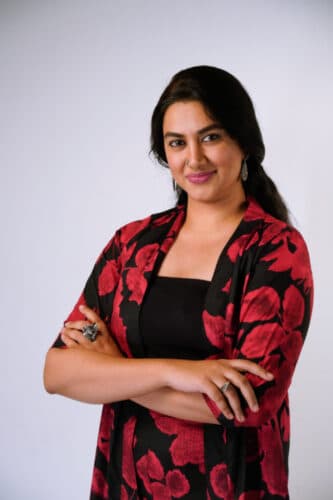
Q. At Nimaya Innovations, you make interactive robots for children with autism. How did this idea come to you and when did you start working on it?
A. My work in this domain started in 2013. I have a bachelor’s degree in electrical engineering, a master’s in robotics, and a PhD in social robotics for children with multiple disabilities. Pretty much every design and concept that you’re seeing at Nimaya right now is something that I actually did in my PhD. When I finished my MTech and was applying for a PhD at different universities, I happened to run into a lot of people from the autism background – it was either a mother or a child or a principal of a school. That’s when I was introduced to this type of disability, and I wanted to know a little more about it.
As a part of my MTech, I worked with a lot of different robotic devices, and I created a couple of them as well. I wanted to try my robotic kits with a few children from a special school. I went over to a school and tried one of the kits with a child. Coincidently, the day I joined SASTRA University for my PhD, I found out that my PhD guide had been looking into the disability sector for the past four years. That felt like a God’s calling for me, and we decided to take a look at social robotics for children with disabilities.
During the next year, I went around to more than 75 different special schools, trying to figure out their methodology, the areas that are not concentrated upon, and how robotics can be used there. I found out that children with autism are more attracted to robots and robot-like features than human beings. That’s because robots tend to have a routine. For any task, robots are going to do the same thing over and over again, a million times over, using the exact same method. Children respond to that, and this helps them adhere to a particular routine. So this is what sparked the entire idea.
Q. Why have you particularly focused on psychomotor skills?
A. When I went to 75 different schools and worked with teachers, special educators, and special organizations, I found a lot of studies that have been done on facial expression, social interaction, and communication. But one of the biggest areas that has not been concentrated upon is psychomotor skills (Motor skills and cognitive skills). The concept of psychomotor skill is nothing but your brain telling your body to do something, your body being able to do that, and your brain getting the feedback. For practically anything and everything that we do in our daily life, we need psychomotor skills.
Children with autism and multiple disabilities need a lot of help with daily-life activities. I realized that this was an area where studies had not been done and robotics had not been implemented. I went ahead and designed about five different robots as part of my Ph.D. I also worked with several hundred children across Tamil Nadu and Karnataka. I went and personally trained these children.
Q. What difference are your robots able to make compared to the traditional therapy method?
A. We figured out that using our robotic interventions accelerates the rate of learning by more than 60 percent, which is not true with any other therapy system right now. The reason that it works is that we use a very unique concept called active learning. In the conventional therapy method, the teacher teaches the child an activity. But due to the lack of audio-visual feedback, it takes much longer for the child to learn and understand. It also has much lower retention – children tend to forget the activity unless they keep doing it in everyday life. But of course, it’s just not possible to use every skill that we have in everyday life.
“In the case of Nimaya, the teacher teaches the child the activity. And now, the device gives a audio – visual feedback / reinforcement due to the, the child is able to learn it really, really fast, and also retain it for a longer duration of time.”
Most importantly, children are able to generalize an activity to everyday life, which is usually not the case. For example, a teacher shows children an apple and says, “This is red.” Now, until the children see an apple again, they won’t be able to relate the color red to maybe a red ball or a red chair. But when it comes to our devices, generalization automatically happens due to the way we have designed the robots. A lot of ergonomic design and disability-conscious design has gone into it.
Q. What kind of IoT architecture have you employed?
A. Our products are not just robotic, but they’re completely IoT-based devices. Each and every one of our systems is completely interconnected. We have a skill training unit and a trainer interface unit, which is like a small IoT gateway. The skill training unit is where the child comes into contact with the robot to learn a set of skills. The trainer interface unit is where the therapist comes into contact to enter the output of the session . Our devices work along with a therapist, and not as a standalone product. These are not autonomous robots because for a child with autism or with multiple disabilities, one of the biggest challenges is social interaction.
“We were always clear that we would never take the human out of the equation.”
One of the reasons for making these devices IoT-enabled was that when I went around talking to therapists, special educators, and counselors, I realized that they don’t have a lot of assessments – rather, they only check the child’s assessment once a year or once every six months. The reason is that they are not able to handle the amount of data that comes with it. So we wanted to create a device where the device is going to handle all the data, and the therapist can just concentrate on the child.
So with the trainer interface unit, which is interactive and has a touchscreen, the amount of data the therapist has to enter is just literally four touches! The rest of the data will automatically be handled by the system. Between the skill training unit and the trainer interface unit, there are several different sensors and electronics, which automatically pick up the data and put it on the cloud. It goes through different sets of algorithms and gives the output graph or the progress, and everything that is required.
Q. Could you speak about a few of your products?
A. We have about six different devices. The moment you look at these, you can already see there is a particular way of designing the device. There’s a particular color scheme. This is because there is a methodology in which you design a device for a child with autism or disabilities. We need to look into the line of sight, we also need to look into the color combination, depth perception, and peripheral vision. All of these factors have to be taken into consideration other than the ergonomic design.
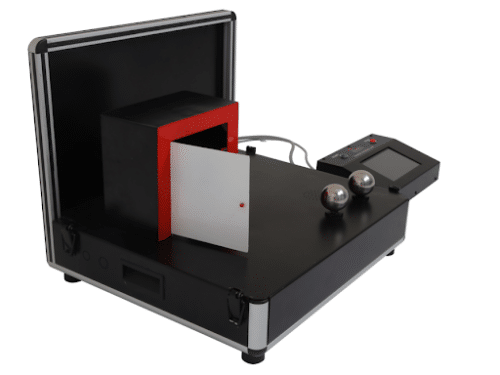
For example, in the door skill training unit, you can see there are two knobs, a space, and then there is a miniature door. I can bet on the fact that if the knobs are placed in any other way , this system will not work for a child because a lot of children have depth perception issues. So a lot of different methodologies and concepts have been used to design each and every aspect of the devices.
Another example would be the joystick device. When you move the joystick, you will be able to see the robot moving up, down, right, and left according to the way that you’re moving it. What happens is that the child is able to see a three-dimensional version of all of this and is able to relate to the action and its reaction. And since it’s a three-dimensional object, the child tends to have a lot of fun playing with it as if it were a toy. As there is reinforcement, the child is getting hooked on it and is very happy to play with it. That way, children end up learning the skills that are required.
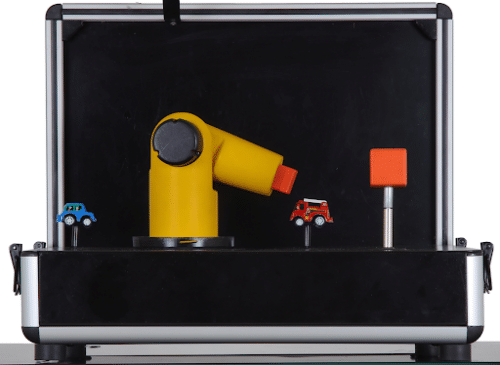
Q. What is your company’s USP? Is it correct to assume that you have little to no competition in this domain, from India and abroad?
A. Right now, across the world, robotic devices have not been used for training children with autism in their daily life skills. So our USP is the architecture, our training, and the devices, all put together. This is because, along with this set of devices, we have a particular methodology that we have developed called the Suprayoga methodology. We have already patented a few of our devices and a few of them are in the pipeline.
There are a lot of universities abroad that have tried similar things, but mostly not for psychomotor skills. For example, there are a couple of universities in Dubai and the US that use humanoid robots to train children with autism. But they are super expensive. In our case, we literally run training for each child for not more than 350 rupees per session. When I did a survey with a few therapists, they told me for a child to learn how to open a door and close it, it takes about eight months to a year. But we are able to teach them in less than two months! That’s the difference we are able to make.
Q. How did you create your first MVP? What kind of hardware did you use in it?
A. Our first MVP was super frugal. For the first couple of designs, I used random plastic parts and regular components like off-the-shelf DC motors. Every university has a sort of garage with several extra parts. So I literally went there and picked up a big plank of the board for the device. I also used the small wooden bench that you sit on when you do puja! So this is the kind of thing that we started with.
After the first two devices were a hit, I went ahead and devised three more of them from scratch. And then the work towards trying to convert it into a prototype was a very different experience. We had to do economic designing, and we used a lot of 3D printing technology in this. Everything is indigenous, and that’s one of the reasons why we were able to survive the COVID scenario. We do not rely on imports.
“All of Nimaya’s products are completely made in India.”
Q. Could you talk a little bit about your app, Gita?
A. Nimaya’s vision is to become an end-to-end platform for all children, so we developed products for all children right from the day they are born. We are developing applications and devices for neurotypical children, and coming up with products for preschool education. When it comes to children with disabilities, we want Nimaya to start right from screening, diagnosis, assessment, and training to post-training, and reinforcement.
During the COVID pandemic, every special school was closed for two years. That’s when we pivoted to an app called GITA. GITA stands for Growth and Intelligence Tracking Application. We wanted to address one of the biggest gaps that we found – a lot of parents do not have awareness of the developmental milestones of children as they grow. Sometimes this lack of awareness leads to unnoticed disabilities way later into growth. Even educated people tend to miss out on such milestones. But early intervention makes a lot of difference. It’s very, very important to figure out any kind of issue at a very young age.
So we came up with this app called Gita. It is available on Play Store as Gita Milestones. It is an application that helps parents track the milestones of children from birth until five years. The app’s UI has a lot of hand-drawn illustrations, so even people who are not able to read or write but do have a smartphone can look at the pictures and go ahead.
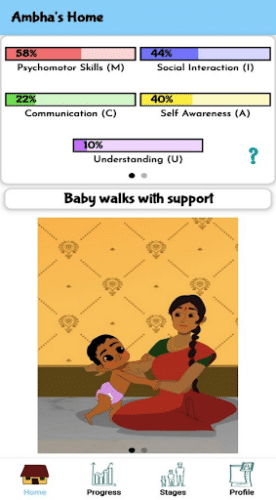
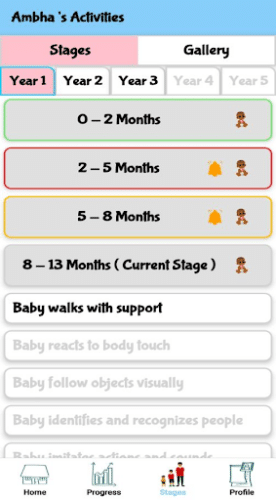
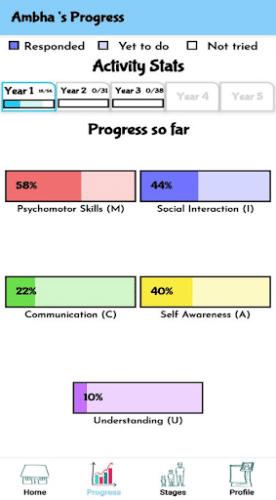
We assess the child’s growth in five different ways – psychomotor skills, social interaction, communication, self-awareness and understanding. As and when the parent enters the data for the child’s activities, the score keeps changing. So this works as the dashboard. And we do not stop right there – we give parents a warning, stating the activities the child is lacking in, and that they need to take the child to a developmental pediatrician.
Q. What would you say is the most unique feature of Gita?
A. The best part of Gita is that we are the first ones to bring in Indian traditional ideology. For example, in the olden days, when people used to stay in joint families, grandparents used to give the baby 10 rupees or a coin or something. It was not about giving money to the baby, but actually to see if the child is able to hold it or not. These are the kinds of things that got lost over a period of time. And these are the kinds of things that we’ve brought in from working with a lot of different elders and experienced professionals.
“And the best part is it’s a completely free app!”
We have followed every single developmental pediatrician assessment norm that is required. Every protocol has been followed. We are also the first to have this app in regional languages. Right now, we already have it in Telugu, Tamil, and Hindi and we are launching it with the different governments. For example, the Tamil version was launched with the Social Welfare Minister of Pondicherry. We are in talks with the Karnataka and Telangana government as well. In fact, we have won the “Best Innovation of the Year” award from the Telangana government!
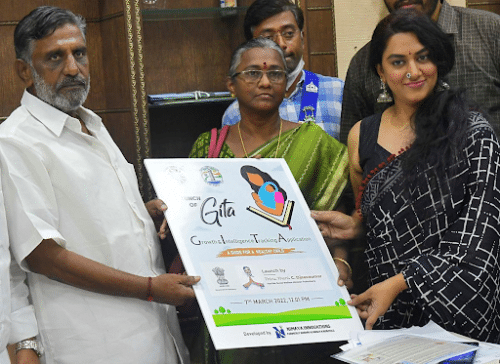
Q. What kind of opportunities exist for special schools to partner with you?
A. Yes, most of our partnerships are going to be with therapists, schools, special schools, special educators and even parents. We run our flagship products in two models. Any special school can subscribe to the devices (or any one of the devices). Once they are done with the training, they can give the device back to us. They can then can pay the per child per session cost to us.
The second model is where schools can buy the devices from us. For example, a special school in southern Pondicherry is interested in getting our systems completely. In this case, we sell the systems right out, but we will charge them for the cloud services that we provide. It’s a very nominal fee. Also, parents can always bring their children to our training centers. Eventually, we might get into a franchisee model as well.
Currently, we have an MOU with NIEPMD (National Institute for Empowerment of Persons with Multiple Disabilities). It’s a central government organization in Chennai. All of our flagship products are already running, training more than 200 children there. Gita is going to be launched in every one of their classrooms and early intervention centers. And it’s going to be launched to the parents as well. We are in talks with Air Force bases to launch in their special schools too.
Q. What are your general investments, hiring and expansion trends?
A. So far we’ve bootstrapped. We have grants from an incubator from Hyderabad, IIM Calcutta, and a few competitions. Yes, we will definitely be going into investment in the future. Speaking of hiring, we are pretty much working from home, except for our assembly that’s happening in-house. Soon, we will be looking to expand our marketing team, and sales team as well.
Talking about expansion plans, we are already open to all states in India. Anyone can approach us and we will be able to send the devices to them – logistically it’s not a problem. We are in talks with a special school in Mumbai, where we might expand soon. We are also being incubated in Australia. So we will soon be exploring Australia, and we are also in talks with Dubai.
Q. What’s next for Nimaya?
A. During the pandemic, parents went through a lot of helpless situations where they weren’t able to train their children. So we have a device in our pipeline which parents can use at home to train their children. It’s in beta testing mode right now. Other than this, I take classes for parents about how special parents can engage their children at home. We are even coming up with a couple of products for neurotypical children and for preschool education as well.






